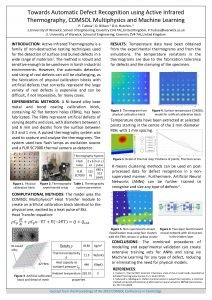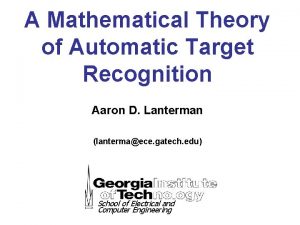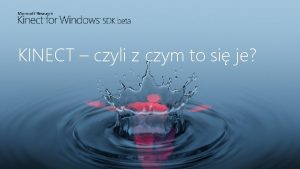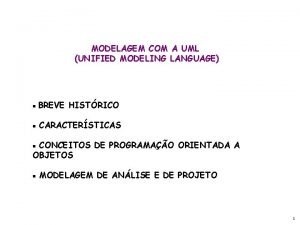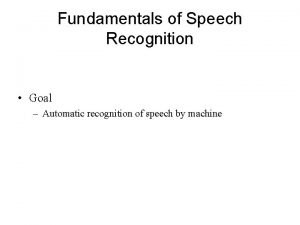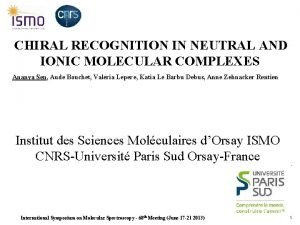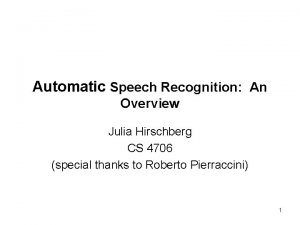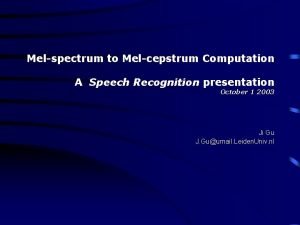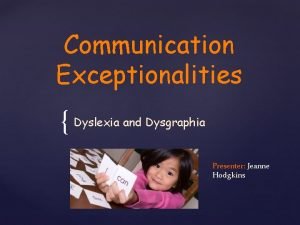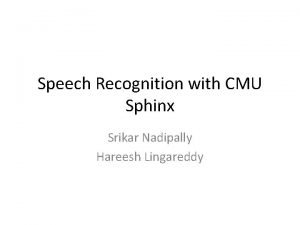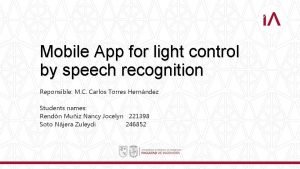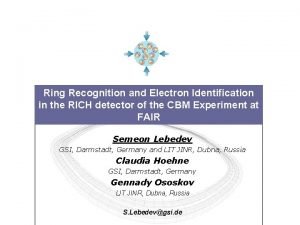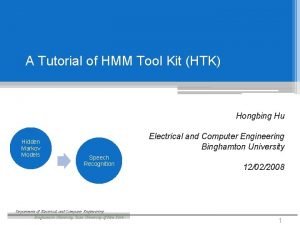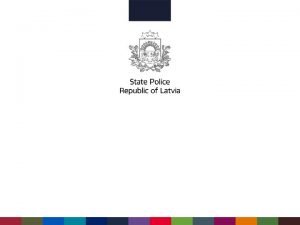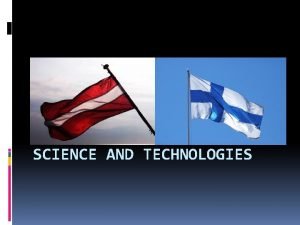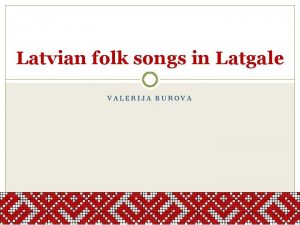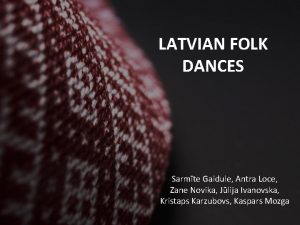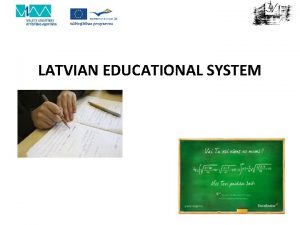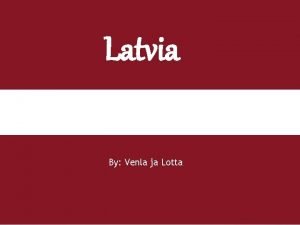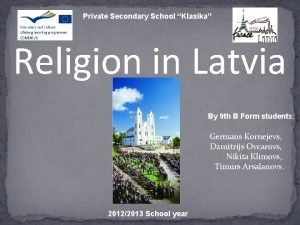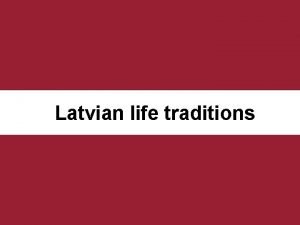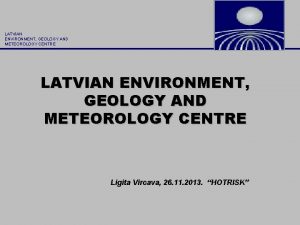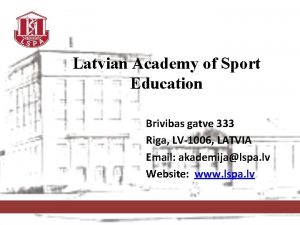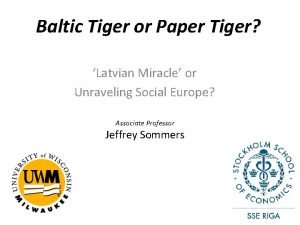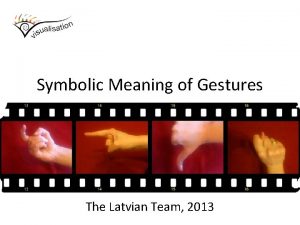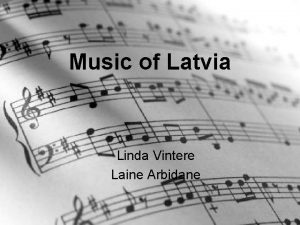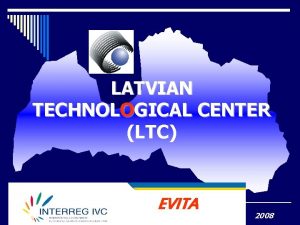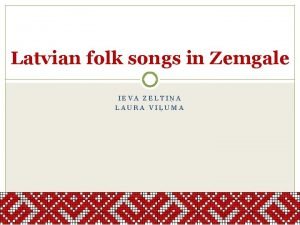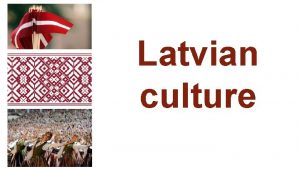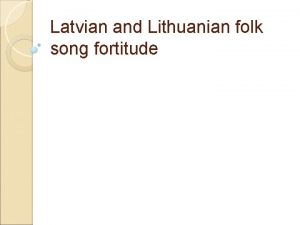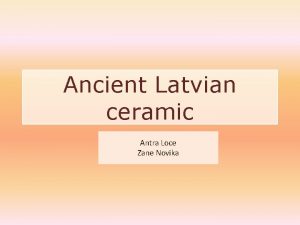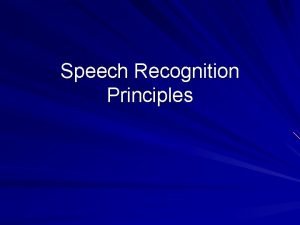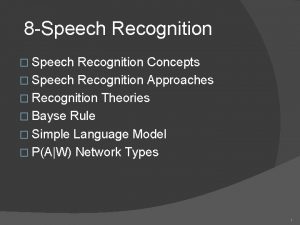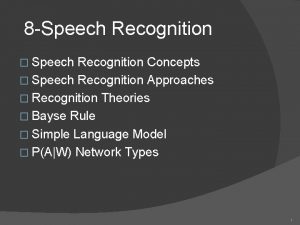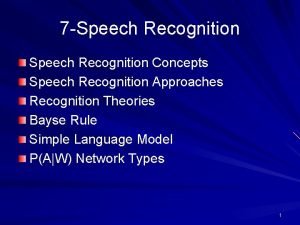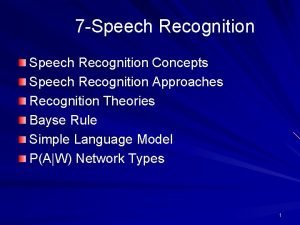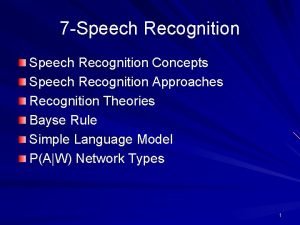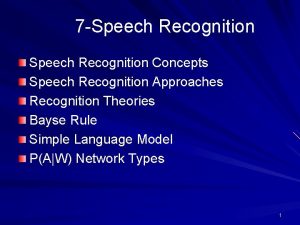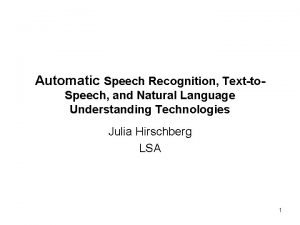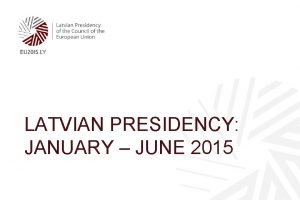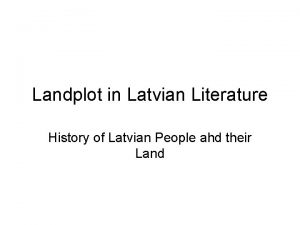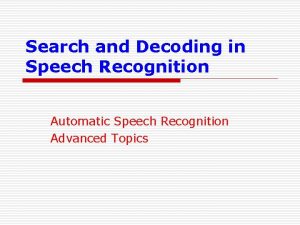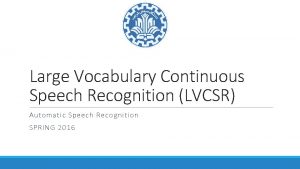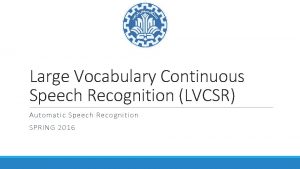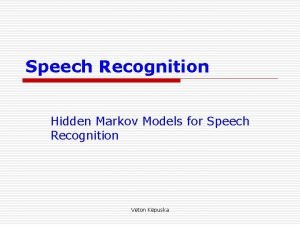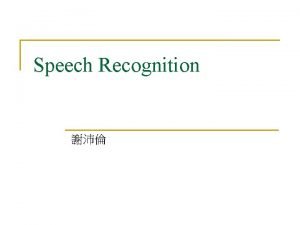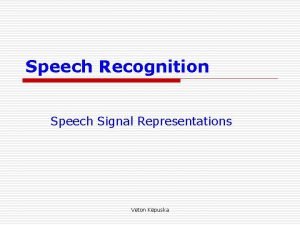MODELLING LATVIAN LANGUAGE FOR AUTOMATIC SPEECH RECOGNITION ASKARS










































- Slides: 42

MODELLING LATVIAN LANGUAGE FOR AUTOMATIC SPEECH RECOGNITION ASKARS SALIMBAJEVS Supervisor: Prof. Inguna Skadiņa University of Latvia

Outline • Introduction • Acoustic modelling • Automatic data acquisition • Pronunciation model • Language modelling • Text preprocessing • Word and sub-word N-gram models • Results

Research Area The research area in the focus of this thesis is the Automatic Speech Recognition (ASR). Automatic Speech Recognition is the ability of a machine to identify words and phrases in spoken language and convert them to a machine-readable format.

Relevance and motivation • Automatic speech recognition can have many useful applications, e. g. : • Natural communication interface • Audio record transcription, keyword search etc. • There were no publicly available services of this kind for Latvian language. • LETA/LUMII, Google, Speechmatics – appeared later during research • Latvian language is probably the least researched among languages of Baltic States. • Solutions and methods for Latvian can also benefit research for other “small” languages.

Concepts of Speech Recognition

Evaluation • Word Error Rate (WER) insertions + substitutions + deletions WER = ------------------------ word count • Example • Vasara ir īsts festivālu laiks • Recognized as «Asara īsts festivāla laiks» • WER = ( 0 + 2 + 1 ) / 5 = 60%

Aim and Objectives • The aim of the research is to find efficient algorithms and create optimal models and systems for Latvian language speech recognition. • Develop a speech recognition system for real business applications. • This research seeks answers to the following questions: • What data is needed to train models for speech recognition for Latvian? • What modelling methods and algorithms are the most appropriate for Latvian? • How to adapt speech recognition models and their output to specific applications? • Serve as a baseline for future Latvian speech recognition research.

ACOUSTIC MODEL

Acoustic Modelling for Latvian P(acoustic signal | T) – how T sounds like? Monophone HMM-GMM Triphone HMM-GMM with LDA … TDNN, i. Vector, “chain” model the best WER Kaldi framework Povey, D. , Ghoshal, A. , Boulianne, G. , Burget, L. , Glembek, O. , Goel, N. , … Vesely, K. (2011). The Kaldi speech recognition toolkit. In IEEE Workshop on Automatic Speech Recognition and Understanding

Acoustic Model Training Data Corpus LSRC LDSC Saeima 1 1 Total Description Size, % of h all Balanced corpus specially designed for 100 34. 0 speech recognition % Balanced corpus for dictation scenario 8 2. 7% Automatically created speech corpus 186 63. 3 from Saeima webpage % 294 100% Pinnis, M. , Auziņa, I. , & Goba, K. (2014). Designing the Latvian Speech Recognition Corpus. In Proceedings of the 9 th edition of the Language Resources and Evaluation Conference (LREC’ 14) (pp. 1547– 1553). Pinnis, M. , Salimbajevs, A. , & Auzina, I. (2016). Designing a Speech Corpus for the Development and Evaluation of Dictation Systems in Latvian, In Proceedings of the 10 th edition of the Language Resources and Evaluation Conference (LREC’ 16) Salimbajevs, A. (2018). Creating Lithuanian and Latvian Speech Corpora from Inaccurately Annotated Web Data. In LREC 2018, 11 th International Conference on Language Resources and Evaluation, Miyazaki, Japan, May 7 -12, 2018.

Automatic Acquisition of Training Data • In recent years, improvements in technology have made it feasible to provide Internet users with access to large amounts of multimedia content. • For example, the Latvian Parliament (Saeima) website contains a large archive of video recordings and the written protocols. • However, these transcripts are not suitable for using directly • Unsegmented • No timing information • Not 100% accurate

Automatic Acquisition of Training Data Salimbajevs, A. (2018). Creating Lithuanian and Latvian Speech Corpora from Inaccurately Annotated Web Data. In LREC 2018, 11 th International Conference on Language Resources and Evaluation, Miyazaki, Japan, May 7 -12, 2018.

Automatic Acquisition of Training Data Salimbajevs, A. (2018). Creating Lithuanian and Latvian Speech Corpora from Inaccurately Annotated Web Data. In LREC 2018, 11 th International Conference on Language Resources and Evaluation, Miyazaki, Japan, May 7 -12, 2018.

Pseudo-Force Alignment Salimbajevs, A. (2018). Creating Lithuanian and Latvian Speech Corpora from Inaccurately Annotated Web Data. In LREC 2018, 11 th International Conference on Language Resources and Evaluation, Miyazaki, Japan, May 7 -12, 2018.

Automatic Acquisition of Training Data • 300 h of Saeima sessions from 2011 -2014 • Additional 186 hours of training data after alignment ASR LSRC data only After adding additional data WER, % 19. 4% 16. 9% -2. 5 (13%)

Data Augmentation • A copy of all data (294 h) is created and different room impulse response are randomly applied to each utterance. • Two copies of each training utterance are created: • One is slowed down to 90% speed • The other is speed up to 110% • The amount of training data is increased 3 times • Randomly applying lowpass filtering to about 50% of corpus to make model robust to narrowband audio. • Total: 294 * 2 * 3 = 1764 hours

Data Augmentation • Eval. General, to evaluate WER on good quality wideband (16 k. Hz) audio. • Narrowband version of Eval. Web. News, to evaluate acoustic model robustness to mismatched audio conditions. Data augmentation WER, % Rever Speed Lowpass Total size, Eval. Gener Eval. Web. Ne b h al ws (narrowband) No No No 294 10. 5 52. 5 Yes No No 588 10. 0 18. 9 Yes No 1764 10. 1 17. 0 Yes Yes 1764 10. 1 13. 9

Grapheme-to-phoneme Model • P(acoustic signal | T) – how text T sounds like? T is decomposed into words • P(phoneme sequence | word) – pronunciation model • Used to calculate: P(phoneme sequence | word sequence) • P(acoustic signal | phoneme sequence) – acoustic model

Grapheme-to-phoneme Model • Grapheme-based approach showed the best results • 33 phonemes (one for each letter) • Dictionary of exceptions • Abbreviations, acronyms • Other (e. g. komats -> koma)

Grapheme-to-phoneme Model Grapheme-based (baseline set) Context-dependent (from Text-To. Speech) Phonetisaurus WFST Statistical machine translation #1 Statistical machine translation #2 Phonem e error rate 8. 14 % 13. 7% - 13. 7% 5. 24 % 14. 0% 3. 26 % - WER 23. 0% 16. 0 % Phoneme set description Graphemes + 4 diphthongs* Phonemes [o] and [uo] are distinguished Phoneme [ss] is added Phoneme [c] is removed and combination of [t]+[s] is used instead Long phoneme [ā] is removed [ei] diphthong is removed [ui] diphthong is added * Two letter combinations “ai”, “au”, “ei” and “ie” are replaced with corresponding diphthongs WER 13. 7% 14. 2% 14. 1% 14. 2% 14. 9% 13. 9% 14. 2%

Grapheme-to-phoneme Model G 2 P model Baseline TTS G 2 P No diphthongs No [c] phoneme No diphones and no long vowels No diphones and no [c] phoneme General, WER 35. 9% 36. 3% 35. 7% 36. 2% Saeima, WER 37. 3% 38. 2% 36. 0% 36. 8% 37. 0% 35. 9% 36. 7%

LANGUAGE MODEL

Language Modelling for Latvian • P(W) – is unconditional probability of word sequence • Knowledge of the language, i. e. what sentences belong to language? • In this work N-gram language models were proven effective for modelling of Latvian language.

Language Modelling for Latvian • Word n-gram language models (LM) are probabilistic models that attempt to predict the next word based on the previous n-1 words. • Trained on Web. News corpus • 46. 6 M automatically crawled sentences from Latvian news portals

Text Corpus Preprocessing • Tokenization and text normalization • Number conversion from digits to words with correct inflection 100 km -> 100 km -> simts kilometri • All punctuation and special symbols (#, %, &, . . . ) are filtered out. Mixed tokens are also filtered out: l 0 lz kas tas %) • True casing using spell-checker latvija -> Latvija, Esmu -> esmu, da. RĪt -> darīt

Text Corpus Preprocessing • Process corpus with the Latvian spell-checker • Filtering sentences that contain more than 1 error septindesmit viens procents iedzīvotāju doma. . . • Train n-gram model on remaining sentences • Select n-grams that contain only correct words Max numbers of errors WER, % 0 20. 31 1 19. 63 2 20. 87

N-gram Language Model • Best results achieved with 3 -gram LM • 800 K word vocabulary • Unpruned, 322 M n-grams • Insignificant improvement from 4 -gram model • But much higher hardware requirements

Sub-word Language Model • Traditional N-gram models treat inflected forms as independent words and does not recognize their similarity • Sub-word models can significantly decrease vocabulary size • Sub-word models enable open vocabulary ASR • There are many ways of decomposition and reconstruction • Morfessor, BPE, stemmers, morphological splitters… • Hidden event LM, markings, tags

Sub-word Language Model • Decomposition: Morfessor 2. 0 and Byte-Pair Encoding • Reconstruction: Marking style Boundary tag Left-marked Right-marked Left+rightmarked Example <w> kā <w> pie dzīv ojums <w> kā pie +dzīv +ojums kā pie+ dzīv+ ojums kā pie+ +dzīv+ +ojums • Integration into decoding graph Smit, P. , Virpioja, S. , & Kurimo, M. (2017). Improved Subword Modeling for WFST-Based Speech Recognition. In Proc. Interspeech 2017 (pp. 2551– 2555).

Sub-word Language Model Test corpus Eval. Web. Ne ws Eval. General Saeima-test Baselin e WER, % Morfessor subwords BPE sub-words 10. 1 10. 3 10. 2 10. 4 9. 8 9. 6 8. 3 7. 9 7. 8 • 6 -gram LM, models are pruned, so that the total n-gram count is similar to baseline bigram and trigram models. • Trained on segmented Web. News • 234 K units for Morfessor and 130 K units for BPE

Sub-word Language Model Test corpus Process Baseline ASR BPE LM ASR Decoding 184 seconds 189 seconds Eval. Web. News Rescoring 16 seconds Decoding 560 seconds 586 seconds Saeima-test Rescoring 21 seconds • BPE LM ASR correctly recognizes 38. 9% of out-of-vocabulary in Eval. Web. News. • It can be concluded that sub-word approach is able to partially overcome sparsity created by inflected forms and improve the speech recognition quality.

RESULTS

Adaptation • • • Latvian Speech-To-Text Transcription Service Saeima Session Transcription Dictation Street Address Recognition Punctuation Restoration TASK Eval. Web. News (general domain) Eval. General (general domain) Saeima (adapted LM) Saeima (general domain) Dictation (adapted ASR) Street address (adapted LM) WER, % 10. 1 9. 6 5. 9 7. 8 12. 2 7. 9

Results Applications • ASR web-service for Latvian • Publicly available using a web-page or API • Mobile app Reizrēķins • A software package Tildes Birojs • Audio and video file transcription • Dictation • Mobile app Tildes Balss Beta ASR since 2015 (Google Latvian ASR – 2017) WER on Eval. Web. News, % This work 10. 1 Google* 36. 2 -50. 6 Speechmatics* 25. 2 * As evaluated in May, 2018

Results • Acoustic, pronunciation and language models for Latvian • Methods for preparing training data • Additional acoustic model training data (186 hours) • State-of-the-art recognition accuracy • Punctuation restoration • Adapted for several tasks • Following the same guidelines allowed to develop a large vocabulary ASR for Lithuanian Salimbajevs, A. , & Kapočiūtė-Dzikienė, J. (2018). General-purpose Lithuanian Automatic Speech Recognition System. In Human Language Technologies - The Baltic Perspective - Proceedings of the Seventh International Conference Baltic HLT 2018, Tartu, Estonia, September 27 -29, 2018.

Publications • Varavs, A. , & Salimbajevs, A. (2018). Restoring Punctuation and Capitalization Using Transformer Models. 6 th International Conference on Statistical Language and Speech Processing (SLSP 2018), October 15 -16, 2018. Contribution: 25% (SCOPUS, Web of Science, to be indexed). • Salimbajevs, A. , & Kapočiūtė-Dzikienė, J. (2018). General-purpose Lithuanian Automatic Speech Recognition System. In Human Language Technologies - The Baltic Perspective Proceedings of the Seventh International Conference Baltic HLT 2018, Tartu, Estonia, September 27 -29, 2018. • Salimbajevs, A. (2018). Creating Lithuanian and Latvian Speech Corpora from Inaccurately Annotated Web Data. In LREC 2018, 11 th International Conference on Language Resources and Evaluation, Miyazaki, Japan, May 7 -12, 2018. • Salimbajevs, A. , & Ikauniece, I. (2017). System for speech transcription and post-editing in Microsoft Word. In INTERSPEECH 2017, 18 th Annual Conference of the International Speech Communication Association, Stockholm, Sweden, August 20 -24, 2017 (pp. 825– 826).

Publications • Pinnis, M. , Salimbajevs, A. , & Auzina, I. (2016). Designing a Speech Corpus for the Development and Evaluation of Dictation Systems in Latvian. In N. C. (Conference Chair), K. Choukri, T. Declerck, M. Grobelnik, B. Maegaard, J. Mariani, S. Piperidis (Eds. ), Proceedings of the Tenth International Conference on Language Resources and Evaluation (LREC 2016). Paris, France: European Language Resources Association (ELRA). • Salimbajevs, A. (2016). Bidirectional LSTM for Automatic Punctuation Restoration. In I. Skadina & R. Rozis (Eds. ), Human Language Technologies - The Baltic Perspective Proceedings of the Seventh International Conference Baltic HLT 2016, Riga, Latvia, October 6 -7, 2016 (Vol. 289, pp. 59– 65). IOS Press. http: //doi. org/10. 3233/978 -1 -61499701 -6 -59 • Salimbajevs, A. (2016). Towards the First Dictation System for Latvian Language. In I. Skadina & R. Rozis (Eds. ), Human Language Technologies - The Baltic Perspective Proceedings of the Seventh International Conference Baltic HLT 2016, Riga, Latvia, October 6 -7, 2016 (Vol. 289, pp. 66– 73). IOS Press. http: //doi. org/10. 3233/978 -1 -61499701 -6 -66 • Salimbajevs, A. , & Strigins, J. (2015). Latvian Speech-to-Text Transcription Service. In INTERSPEECH 2015, 16 th Annual Conference of the International Speech Communication Association, Dresden, Germany, September 6 -10, 2015 (pp. 723 -725)

Publications • Salimbajevs, A. , & Strigins, J. (2015). Error Analysis and Improving Speech Recognition for Latvian Language. In Recent Advances in Natural Language Processing, RANLP 2015, 7 -9 September, 2015, Hissar, Bulgaria (pp. 563– 569). • Salimbajevs, A. , & Strigins, J. (2015). Using sub-word n-gram models for dealing with OOV in large vocabulary speech recognition for Latvian. In B. Megyesi (Ed. ), Proceedings of the 20 th Nordic Conference of Computational Linguistics, NODALIDA 2015, May 1113, 2015, Institute of the Lithuanian Language, Vilnius, Lithuania (pp. 281– 285). Link{ö}ping University Electronic Press / ACL. • Salimbajevs, A. , & Pinnis, M. (2014). Towards Large Vocabulary Automatic Speech Recognition for Latvian. In Human Language Technologies – The Baltic Perspective (pp. 236– 243). IOS Press.

Approbation in Research Projects 1. Research project “Competence Centre of Information and Communication Technologies” of EU Structural funds, contract nr. L-KC-11 -0003 signed between the ICT Competence Centre (www. itkc. lv) and the Investment and Development Agency of Latvia, research No. 2. 4 “Speech recognition technologies”. 2. Research project ”Competence Centre of Information and Communication Technologies” of EU Structural funds, contract No. 1. 2. 1. 1/16/A/007 signed between ICT Competence Centre and Central Finance and Contracting Agency, Research No. 2. 3 “Speech recognition and synthesis for professional application”. 3. Project “Automatic speech recognition, synthesis and creation and improvement of adaptation technologies in R & D” ("Speech Cloud"), No. J 05 -LVPA-K-01 -0034. Supported by EU Investment Fund under 2014– 2020 Economic Growth Operational Programme’s 1 st priority "Scientific Research, Experimental Development and Innovation Promotion" measure "Intellect. Joint Science-Business Projects" (invitation No. J 05 -LVPA-K-01). 4. Research project "Neural Network Modelling for Inflected Natural Languages" No. 1. 1/16/A/215. Research activity No. 4 “Neural network model for speech technologies (LV, LT)”. Project supported by the European Regional Development Fund.

Publications • 11 publications • 9 publications thesis is based on • 2 publications relevant to the topics discussed in thesis. • 10 indexed Scopus and/or Web of Science

Summary of Contributions Automatic data collection ASR for Latvian Acoustic model Text filtering and preprocessing Pronunciation model Language model Shared rescoring Sub-word language model Decoding Training data adaptation Punctuation restoration Integration into MS Word • Adaptation Practical applications Postprocessing 11 publications • 9 publications thesis is based on • 2 publications relevant to the topics discussed in thesis. • 10 indexed Scopus and/or Web of Science

Q&A
 Automatic defect recognition
Automatic defect recognition Automatic target recognition
Automatic target recognition Kinect for windows speech recognition language pack
Kinect for windows speech recognition language pack Unified modelling language
Unified modelling language Universal modeling language
Universal modeling language Fundamentals of speech recognition
Fundamentals of speech recognition Deep learning speech recognition
Deep learning speech recognition Aude leperre
Aude leperre Julia speech recognition
Julia speech recognition Speech recognition presentation
Speech recognition presentation How dyslexic see words
How dyslexic see words Cmu speech recognition
Cmu speech recognition Speech recognition
Speech recognition Speech recognition app inventor
Speech recognition app inventor Dragon speech recognition
Dragon speech recognition Electron speech to text
Electron speech to text Htk tutorial
Htk tutorial Latvian state police
Latvian state police Latvian inventions
Latvian inventions Latvian folk songs
Latvian folk songs Zane loce
Zane loce Latvian school system
Latvian school system Riikan asukasluku
Riikan asukasluku Religion in latvia
Religion in latvia Krustabas
Krustabas Latvian environment, geology and meteorology centre founded
Latvian environment, geology and meteorology centre founded Latvian academy of sport education
Latvian academy of sport education Latvian miracle
Latvian miracle Latvian symbols meaning
Latvian symbols meaning Traditional latvian music
Traditional latvian music Latvian technological center
Latvian technological center Zeltia
Zeltia Latvian culture facts
Latvian culture facts Lithuanian folk music
Lithuanian folk music Zane
Zane Language
Language Kontinuitetshantering i praktiken
Kontinuitetshantering i praktiken Typiska novell drag
Typiska novell drag Tack för att ni lyssnade bild
Tack för att ni lyssnade bild Vad står k.r.å.k.a.n för
Vad står k.r.å.k.a.n för Shingelfrisyren
Shingelfrisyren En lathund för arbete med kontinuitetshantering
En lathund för arbete med kontinuitetshantering Personalliggare bygg undantag
Personalliggare bygg undantag
